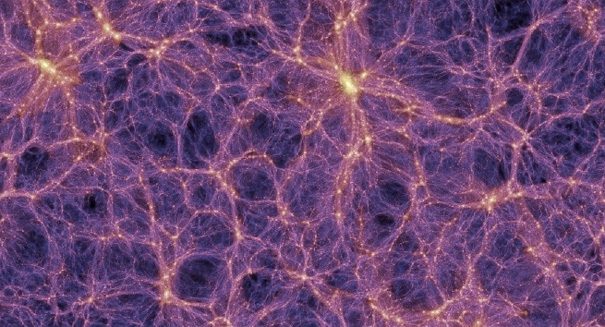
A new discovery in the world of dark matter.
We can’t see it, but astronomers know it’s there, taking up most of the space in our universe. It’s called dark matter, and scientists had used a to determine just what this stuff is made out of. The results showed nothing.
“Basically, we saw nothing. But we saw nothing better than anyone else so far,” said particle physicist Daniel McKinsey of Yale, a member of the Large Underground Xenon (LUX) collaboration. The LUX experiment was designed to look directly at the invisible particles that make up dark matter, which neither emits nor absorbs light or other electromagnetic radiation. In fact, the reason scientists know it exists at all is from the gravitational effects it has on visible matter as well as its influence on the overall structure of the universe.
The way planets and stars move around each other is the most straightforward indicator of the presence of dark matter particles called Weakly Interacting Massive Particles or—wait for it—WIMPs. Physicists believe there are five of these WIMPS for every single proton, neutron and other ordinary particles floating around in the universe, making up around 27 percent of the matter in the universe.
Finding nothing in their results is not altogether a bad thing, though, say the physicists. For one, it rules out theories that had been developing, narrowing the scope of possibilities and moving science closer to an answer.
“Something that they had thought was in play is being kicked off the field,” said physicist Richard Gaitskell of Brown University, who also works on LUX.
As per its name, the LUX detector lives deep underground at the Stanford University Research Facility. There, it was set up to try and detect the WIMPs as they pass by the Earth, only becoming visible when they bump into regular matter. Its first 90-day run of this detection experiment happened earlier this year.
The findings from LUX seem to bring about more questions for the scientists than answers. Scientists have scheduled another 300-day detection experiment with LUX for 2014, where they hope a more sensitive system will more easily be able to spot what they missed at this go around.
“This really really should be it. I personally hope we will have detected WIMPs within this decade,” said Chamkaur Ghag, a collaborator on the LUX experiment from University College London. “We should know what a quarter of the Universe really is and LUX should be the one that finds it first.”
Leave a Reply